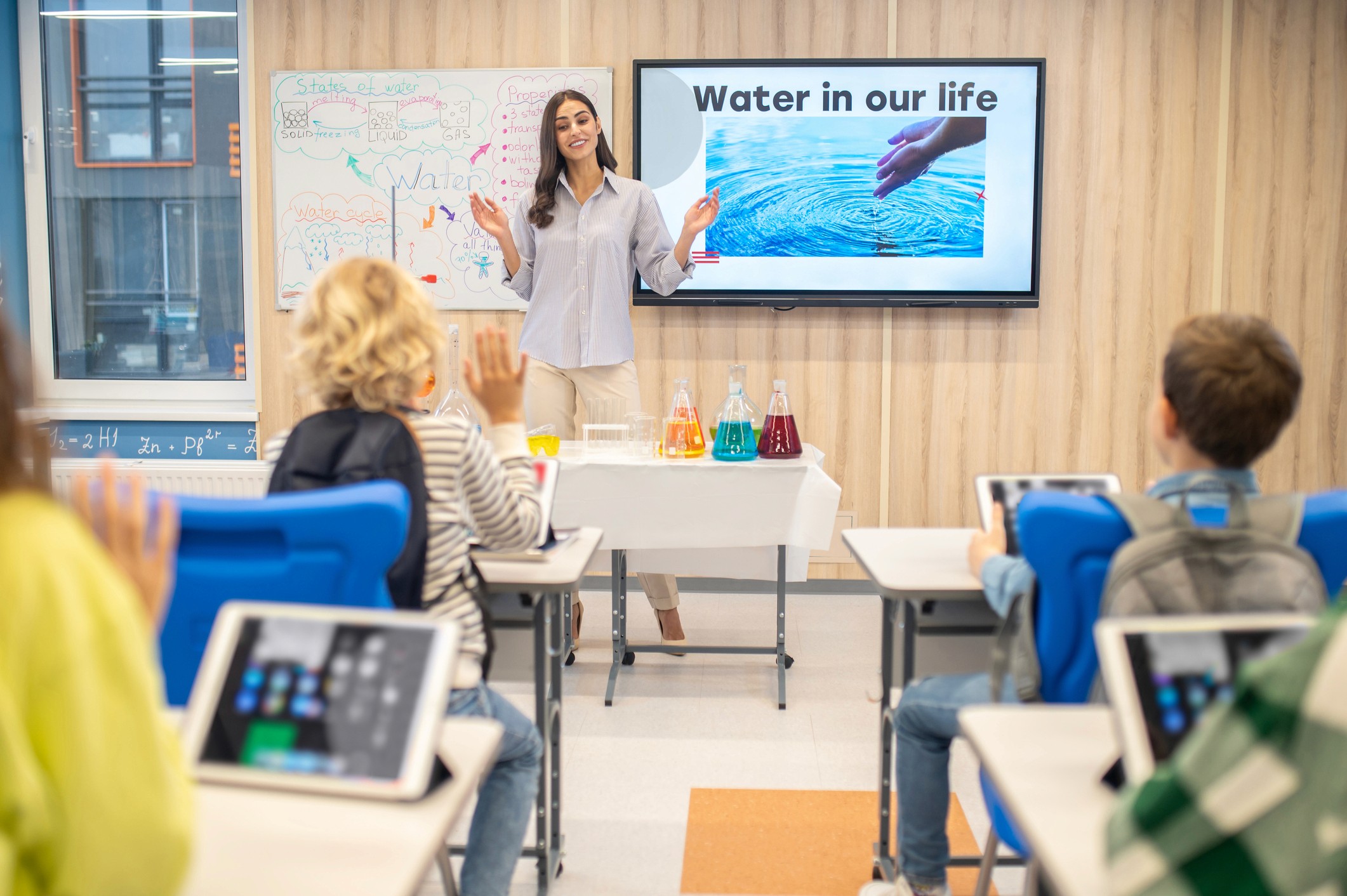Your Lesson
So now you know what screen sharing can do, how do you apply this to your lessons?
In a recent webinar, Britney Horton, an Instructional Technology Coach from Denver Public Schools joined us to break down how technology should be integrated into learning goals. You can check this out below, before reading how we've expanded on Britney’s ideas to outline the journey to utilizing our Screen Sharing solution in your lessons.
Understanding the curriculum or learning objectives you want to achieve and how technology can help you succeed. Simplify this process by asking yourself the following questions:
Screen sharing can help you elevate the student voice in your lesson. Allowing the student to become the teacher, while the teacher becomes the facilitator to student empowerment and engagement.
Any educators working in alignment with the Common Core State Standards will know that students must learn to collaborate, listen, and evaluate information, using media and visual displays to help achieve effective communication.
Our Screen Sharing solution is just one tool that can support you in this, particularly when reviewing the below standards:
Comprehension and collaboration
Presentation of knowledge and ideas
Construct viable arguments and critique the reasoning of others
Model with Mathematics
Student-centered learning or focus on the student voice is a great way to make lessons more interactive and engaging. Empowering students to take active parts in learning, content sharing, and communication.
Brainstorming - Exposure to idea generation, understanding perspectives, and collaboration can be gained through facilitating brainstorming sessions or problem solving discussions.
Debate + Understanding perspectives - Challenge students to defend their arguments or points of view, which highlight the importance of respect and constructive feedback when communicating.

Technology like screen sharing software, should be integrated into your daily teaching life. As it enables main displays and hardware to become extensions of your device. Improving the accessibility of content and information for the class.
Practice makes perfect! Make sure you feel confident using screen sharing to enhance your lesson and be prepared for unexpected events. Technology is a wonderful thing, but it isn’t perfect. While it’s always good to have a backup plan if technology is making your lesson go awry, it’s also good exposure for students to see real time problem solving. No doubt they’ll face challenges like network stability and delays in their careers.
Think about how you want to start your lesson, what content you want to share and what involvement you want from students.
If you’d like students to join a session, do they know how?
Promote how to join resources at the start of your lesson, via LMS platforms or Google Classroom. Want to go simpler? We have how to join a session posters below that you can use to remind students.

We want content to be the focus of your lessons, not the technology behind it. To do that, students should understand the purpose and rules behind using this software, and be able to follow the routine to join a session.
Get students involved in setting the expectations and rules around using screen sharing. What should and should not be shared, when and where you can join a session, taking turns and waiting for instructions are some of the guidance students should discuss.
Posters about these rules are great ways to remind students what to do when screen sharing.
To improve your productivity and time management and give students confidence in their ability, good guidance on how students join a session is important.
What is the process you want students to follow?
How can this be made simple and easy to remember?
Think about how you want students to join a session, like via a browser or the desktop app. Can this be bookmarked or placed in easy view.
What resources can you use to teach and remind students - This How-to join poster can be shared to the screen, printed out of sent to students whenever needed.
Screen Sharing goes beyond simply teacher presentations. Take a look at the ideas below that introduce the outside world into the classroom and create interactive and exciting moments for your students.











